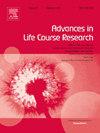Concentration of disability in families: Intergenerational transmission or assortative mating?
IF 3.4
2区 社会学
Q1 Medicine
引用次数: 0
Abstract
Although studies have established that health and socioeconomic disadvantages often accumulate within families, little is known about the extent to which disability is concentrated within certain families and transmitted across generations. We use retrospective information about growing up with parent(s) or sibling(s) with a disability from the 2020 wave of the representative Survey of Health, Impairment and Living Conditions in Denmark (N = 7709). Building on this data and applying a family life course perspective, we examine if growing up with parent(s) and/or sibling(s) with a disability is associated with 1) having a disability oneself, 2) the probability of having a partner with a disability and 3) the occurrence of disability in the next generation. Our findings demonstrate that the odds of having a disability are higher among individuals who grew up with parent(s) and/or sibling(s) with a disability. While the odds of being partnered are not associated with family members’ disabilities, we find a positive association between having grown up with parents with a disability and having a partner with a disability. Moreover, having a child with a disability is positively associated with one’s own, parents’, siblings’ and partner’s disabilities. We thus conclude that disability is concentrated within certain families and that both intergenerational transmission and assortative mating contribute to this concentration.
残疾集中在家庭中:代际传递还是同类交配?
尽管已有研究证实,健康和社会经济方面的不利条件通常会在家庭内部累积,但对于残疾在多大程度上集中于某些家庭并代代相传却知之甚少。我们使用了 2020 年丹麦代表性的健康、损伤和生活条件调查(N = 7709)中有关父母或兄弟姐妹残疾的成长回顾性信息。我们以这些数据为基础,运用家庭生命历程的视角,研究了在父母和/或兄弟姐妹身患残疾的环境中成长是否与以下因素相关:1)自身残疾;2)伴侣身患残疾的概率;3)下一代身患残疾的概率。我们的研究结果表明,在有残疾父母和/或残疾兄弟姐妹的家庭中长大的人,患有残疾的几率更高。虽然成为伴侣的几率与家庭成员的残疾无关,但我们发现,与残疾父母一起长大与拥有残疾伴侣之间存在正相关。此外,有残疾子女与自己、父母、兄弟姐妹和伴侣的残疾情况都呈正相关。因此,我们得出结论,残疾集中在某些家庭中,代际传递和同类交配都是造成这种集中的原因。
本文章由计算机程序翻译,如有差异,请以英文原文为准。
求助全文
约1分钟内获得全文
求助全文
来源期刊

Advances in Life Course Research
SOCIAL SCIENCES, INTERDISCIPLINARY-
CiteScore
6.10
自引率
2.90%
发文量
41
期刊介绍:
Advances in Life Course Research publishes articles dealing with various aspects of the human life course. Seeing life course research as an essentially interdisciplinary field of study, it invites and welcomes contributions from anthropology, biosocial science, demography, epidemiology and statistics, gerontology, economics, management and organisation science, policy studies, psychology, research methodology and sociology. Original empirical analyses, theoretical contributions, methodological studies and reviews accessible to a broad set of readers are welcome.
 求助内容:
求助内容: 应助结果提醒方式:
应助结果提醒方式:


